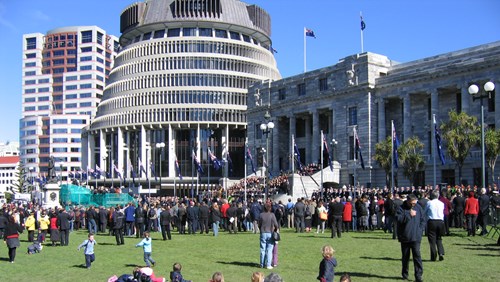
Russia Braces for New Sanctions, Putin Unfazed
The UK and the EU have agreed to hit Russia with a raft of new economic sanctions after hopes of a ceasefire with Ukraine came to nothing. One French minister commented that it is time to “suffocate” the Russian economy .
Since the country’s fullscale invasion of Ukraine in 2022, that economy has certainly suffered . Sanctions on Russia have already led to a depreciation of the rouble, high inflation, very high interest rates and a stagnating economy .
But it remains unclear what effect any new measures will have. And Vladimir Putin has a history of riding out economic hardship.
When he became president of Russia just over 25 years ago , the country’s economy was in dire straits. Attempts by his predecessors Mikhail Gorbachev and Boris Yeltsin to build a more open and capitalist system had not worked well for most Russian citizens.
Instead, a rapid wave of privatisations , which reformers hoped would build strong institutions, had mostly benefited a small group of oligarchs who exploited a weak and corrupt state to seize key oil, gas and mineral assets.
Those oligarchs resisted legal reform, moved wealth abroad, failed to invest in the domestic economy, and gradually gained control of major corporations and media, expanding their political influence. By 1995, nearly half of Russians were living in poverty .
The 1998 crisis worsened the situation, as a global recession and falling commodity prices led to fiscal imbalances and doubts about Russia’s ability to service its debt and uphold the fixed exchange rate . The central bank raised interest rates to 150% to try and stabilise the rouble, but this failed .
It eventually allowed the rouble to float, and the currency lost about two-thirds of its value. When he came to power in 2000, Putin was then confronted with the challenge of rebuilding the Russian economy.
Luckily for him, between 2000 and 2008, an oil and gas boom drove GDP growth, increasing incomes, and allowing for early repayment of national debts. Putin – and national pride – received a boost.
Rising energy revenues helped stabilise the economy and enabled the state to tighten its grip on the energy sector. By 2006, Gazprom accounted for 20% of government tax revenue .
Putin then shifted his focus to Europe. With German support, the Nord Stream pipeline was completed in 2011 , enabling direct gas exports to western Europe while bypassing Ukraine. This increased European dependence on Russian energy.
But Putin’s oil and gas-driven economic model struggled to sustain growth, and by 2013, his approval ratings had fallen to their lowest point since 2000.
The annexation of Crimea in 2014, along with a very expensive Winter Olympics in the Black Sea resort city of Sochi, temporarily boosted his popularity.
However, these accomplishments did little to address Russia’s core economic problems, particularly its failure to build a diversified economy.
By 2018, Russia’s economy was again stagnant, with a weak currency and declining living standards, and Putin’s popularity fell in part due to unpopular budget-saving reforms, including raising the retirement age.
There was widespread doubt about Putin’s model of lasting prosperity , which relied on state-led growth, but was marked by instability, resource dependence and growing geopolitical ambition.
In this light, Putin’s full-scale invasion of Ukraine in 2022 appeared to be a familiar tactic to boost support. Indeed, his approval jumped to 83% after invading Ukraine, matching levels seen after the 2014 Crimea annexation. His ratings have remained high since, with recent polls still showing approval levels above 80%.
But the Russian economy will still be a worry. Sustaining a “war economy”, where manufacturing and investment are focused on conflict cannot go on forever , particularly as the manufacturing product is being rapidly depleted as the Russian military uses it the field. And reliance on commodities has amplified the impact of sanctions, hitting key banks and energy firms such as Gazprom and Rosneft.
Meanwhile, the US has significantly expanded its presence in Europe’s energy market, supplying nearly 50% of the EU’s liquid natural gas imports after tripling exports between 2021 and 2023.
Major Russian pipeline projects such as Nord Stream 2 and Power of Siberia 2 remain in limbo. And the decline in oil prices in April 2025 , the biggest since November 2021, poses further risks.
If a ceasefire is agreed, a pause in the war could offer Russia the chance to regroup and recover economically. Sanctions are often temporary , and global demand for oil and gas remains strong . Some countries may re-engage in trade.
But future economic stagnation could once again fuel aggression. Unless Russia undertakes structural reforms and redefines its role in the global economy by reducing reliance on resource exports and engaging more constructively with global markets, the cycle of confrontation may repeat itself, with far-reaching global consequences.
The authors do not work for, consult, own shares in or receive funding from any company or organisation that would benefit from this article, and have disclosed no relevant affiliations beyond their academic appointment.


